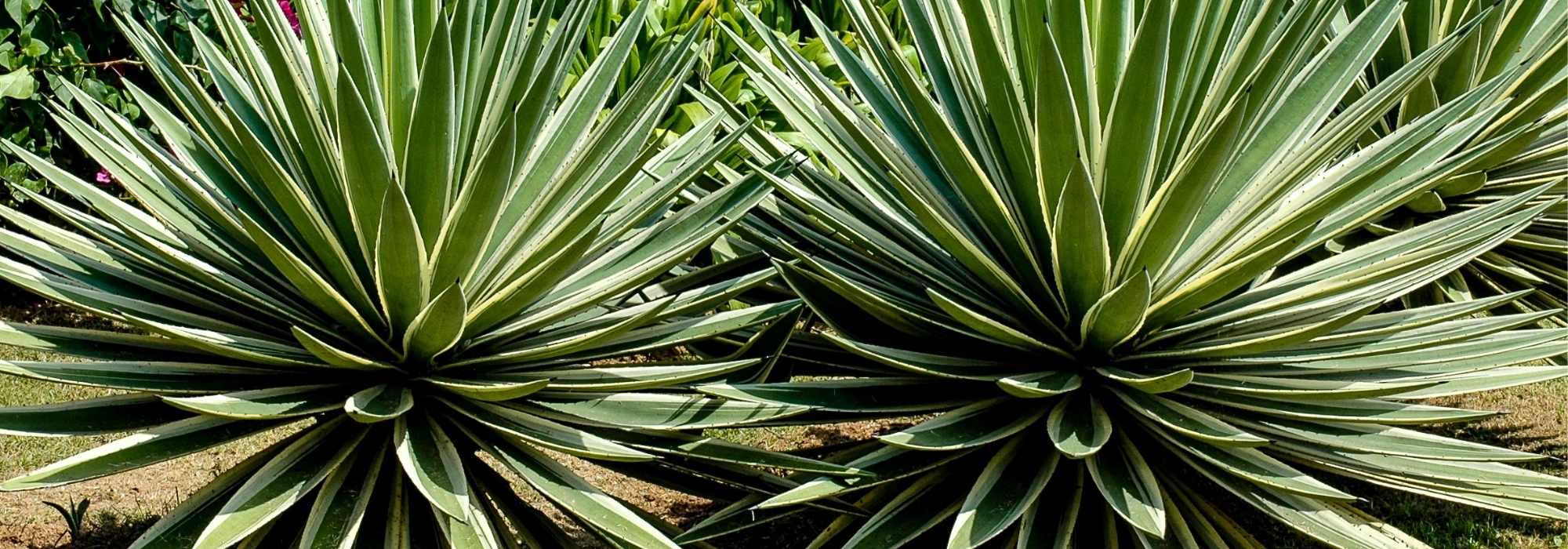
Choosing an agave
How to make the right choice?
Contents
Agave is an incredible succulent plant with a truly exotic temperament! It is characterised by a majestic appearance and very graphic foliage. Its immense, sharp leaves can extend up to 2 metres in length, reminiscent of the American Agave or Agave americana, impressive for its monumental stature. Often native to the desert regions of Mexico like cacti, it is a semi-hardy plant perfectly suited to arid zones: it loves sun and well-drained, poor soil. It is particularly adapted to gardens spared from severe frosts, although some agaves prove to be quite resistant to cold.
The genus includes nearly 200 species and so many cultivars that they allow for a beautiful collection to be established quickly. Some are thorny, others are filamentous; they can be bluish, variegated, giant, or smaller! Hardiness, colour and appearance of evergreen leaves, size, or even use: we help you clarify your choice of Agave based on these different criteria!
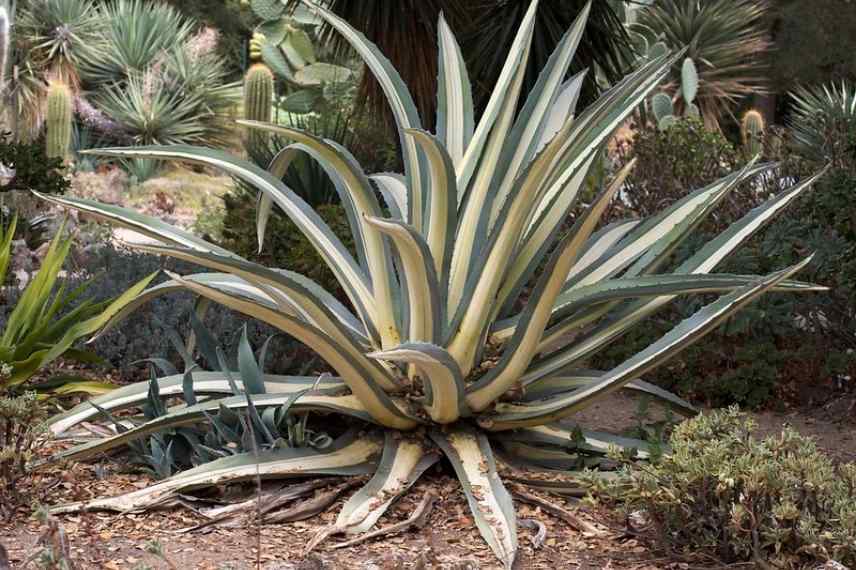
A decidedly exotic air with Agave americana (© Jean)
→ Also discover our complete guide: “Agave: plant, grow, and maintain”
According to the foliage
Dark green to yellowish-green, blue-green grey, the evergreen foliage of Agaves explores all shades of greens, greys, and blues or offers striking variegations.
According to leaf colour
- Solid greens: a beautiful bright green dusted with white for the Agave montana, or Mountain Agave, a light grey-green solid colour for the Agave neomexicana, or light to medium green for the Twin Flower Agave (Agave geminiflora).
- Blue greens: the must-have Agave americana with its large grey-blue leaves, the Agave havardiana, or Havard Agave, and the Agave parryi var. huachucensis with their grey-blue to grey-green hues.
- Yellow or cream margined: blue-green edged with cream white in the Agave angustifolia ‘Marginata’, widely bordered with yellow-cream on a green background in the Agave americana ‘Variegata’.
- Variegated: the stunning Americana mediopicta ‘Alba’ with its leaves marked by a wide central white band.
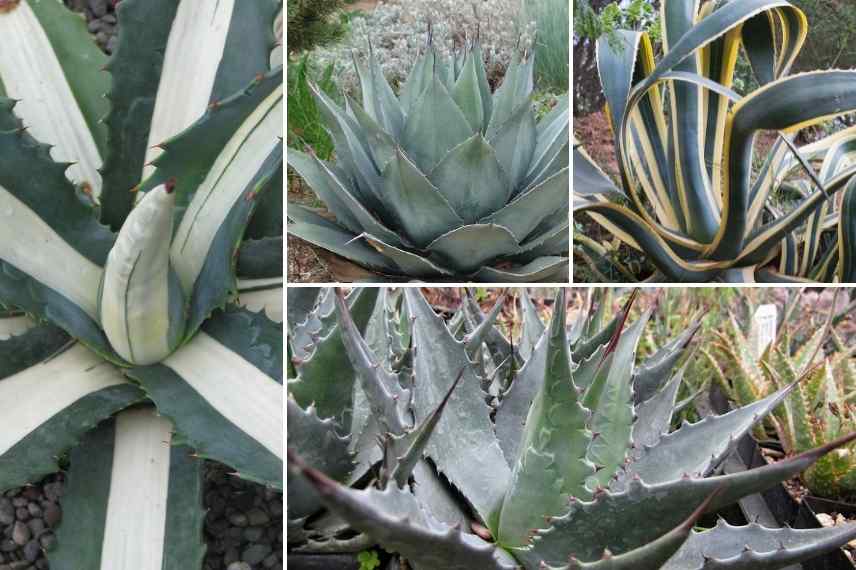
Agave americana ‘Mediopicta’ (© Peganum), Agave havardiana (© Drew Avery), Agave americana and below Agave montana (© Megan Hansen)
According to leaf appearance
The Agave grows like a large artichoke composed of numerous fleshy leaves, imbricate with one another, forming large graphic rosettes. Some are particularly distinguished by the length of their leaves, and their shape varies from one variety to another. They are flat, thick and fleshy, slightly bulging, ovate, pointed, or paddle-shaped. They are often spiky, dentate with sharp thorns, and sometimes end with a thorny tip.
- With large stiff leaves: The Agaves americana are remarkably graphic with their immense very pointed leaves, which can reach 2 m in length and 20 cm in width.
- Short and tapered: they resemble large artichoke leaves in the Agave parryi var. huachucensis, in the Agave ovatifolia, and in the Queen Victoria’s Agave.
- Sword-shaped: they are elegant in ‘Marginata’, even finer and edged with long thread-like filaments in the Agave filifera.
- Very long and thin: they are thread-like in the Agave geminiflora.
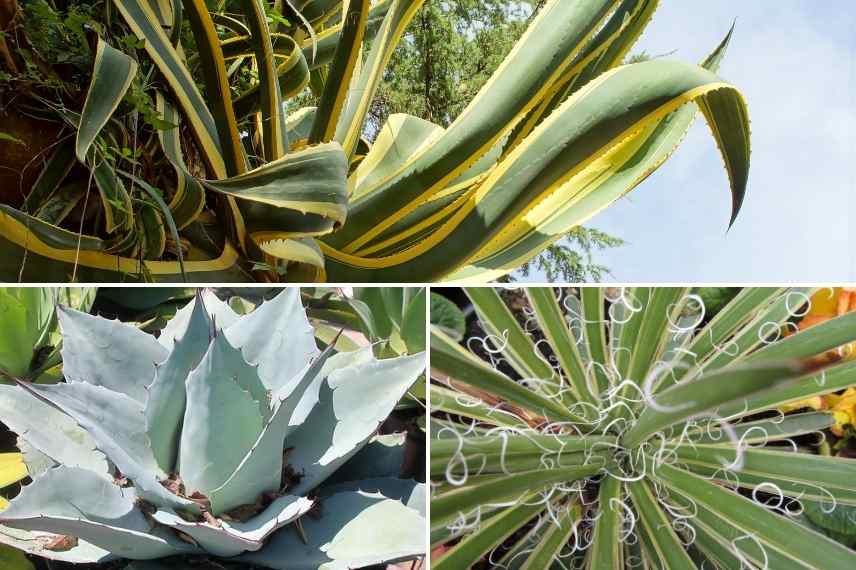
Agave americana at the top, left Agave ovatifolia (© Cultivar 413) and right Agave filifera
Read also
Agave: planting, growing, and caring forAccording to the silhouette
In the Agave world, the habit is more or less regular and compact. These succulent plants differ mainly in the number of leaves that make up their rosette. Some form perfectly geometric balls, while others have rosettes with a more open and unruly habit featuring slightly incurved leaves.
- Round like artichokes: Agave victoriae reginae develops a dense rosette, in a perfect ball, which is radiant, almost hemispherical, also seen in Agave filifera and Parry’s Agave.
- In a cup shape: Agaves americana grow in powerful rosettes of large, stiff, pointed leaves, standing upright towards the sky. The habit is more unruly. Very open when in full sun, they will be more compact in partial shade.
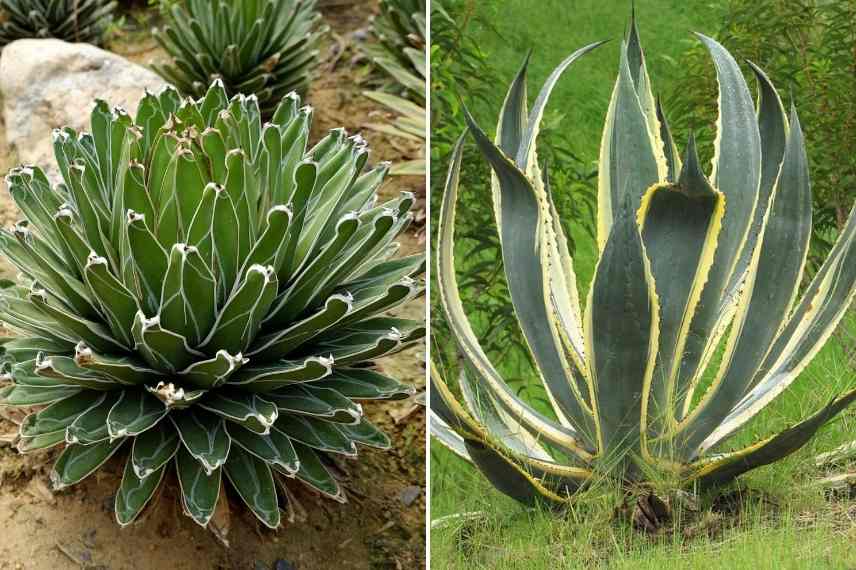
Agave victoriae reginae, and Agave americana (© Forest and Kim Starr)
Discover other Agave
View all →Available in 2 sizes
Available in 1 sizes
Available in 1 sizes
Available in 2 sizes
Available in 2 sizes
Available in 2 sizes
Available in 0 sizes
Available in 1 sizes
Available in 1 sizes
Available in 1 sizes
According to its size
Agaves offer a wide variety of sizes. Growth is more or less moderate depending on the species and varieties, ranging from 20 cm to 3 m in height and spread at ripeness for the monumental agaves.
The giants
They have immense leaves, sometimes over 2 m long, and are absolutely divine in a large exotic rock garden where they will be the centrepieces. After a few years, they can become exuberant in open ground and display surprising proportions of up to 3-4 metres in diameter for the same height! With their architectural habit and oversized character, large agaves, such as A. Americana, are perfectly suited to create a spectacular focal point and to recreate a setting inspired by the vast arid and wild spaces of Mexico.
The intermediates
Forming rosettes between 70 cm and 1 m in all directions, with a fairly slow growth rate, they fit in anywhere in the garden. Thus, Agave titanota, Agave geminiflora, and Mountain Agave are excellent plants for structuring dry slopes.
The small varieties
Agave stricta ‘Nana’ is a dwarf form reaching only 30 cm in all directions at maturity, while Agave victoriae reginae remains small with its 50 cm height and 40 cm diameter at maturity. Well-suited for pot cultivation, they add a wild exotic flair to terraces and small urban gardens.
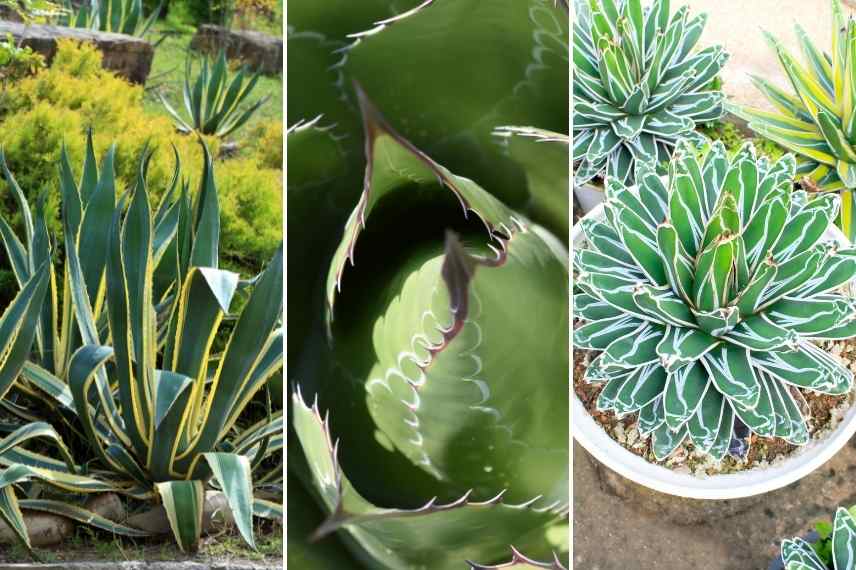
Agave americana, Mountain Agave, Agave victoriae reginae in pot
Read also
How to design a tropical garden?According to its hardiness
Under its exotic appearance as a rather tender plant suited to dry and warm climates, some species of Agave are as beautiful as they are cold-resistant, but only when planted in the ground, in poor and very well-drained soil. The drier the soil, the more hardy they will be. They do not survive in wet soils during winter, which will surely cause them to rot.
The hardiest
Agave neomexicana and Agave havardiana are part of a tribe of agaves capable of withstanding severe frosts of around -25°C, in dry soil and provided they are protected from rain in winter. L’Agave parryi var. huachucensis also boasts commendable hardiness down to -16/-18°C in dry terrain. L’Agave montana, or Mountain Agave, is hardy down to -20°C. They can be grown in the ground in almost all our regions.
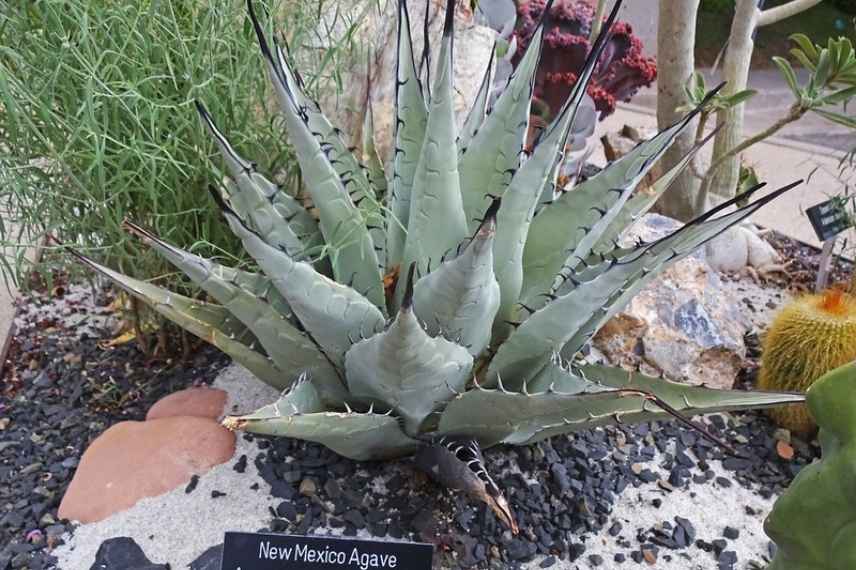
Champion of hardiness, Agave parryi var. neomexicana (© Andrey Zharkikh)
The most tender varieties
Giant Agaves americana withstand brief and light frosts, down to about -5 to -10°C. They are therefore best reserved for planting in the ground in our milder climate regions, and should be grown in large pots that can be brought indoors for winter in cooler areas.
→ Learn more with our article: Agave, the hardiest varieties
According to its use
Large-growing Agaves are stunning when planted alone in a Mediterranean garden. These beautiful succulents structure the exotic and wild decor of large dry rockeries and sun-baked slopes, resembling large gravel beds, to which they add depth.
For pot cultivation, choose small varieties or the more tender species: they add a modern and exotic touch to terraces or can easily be integrated into a cactus collection.
- Subscribe!
- Contents
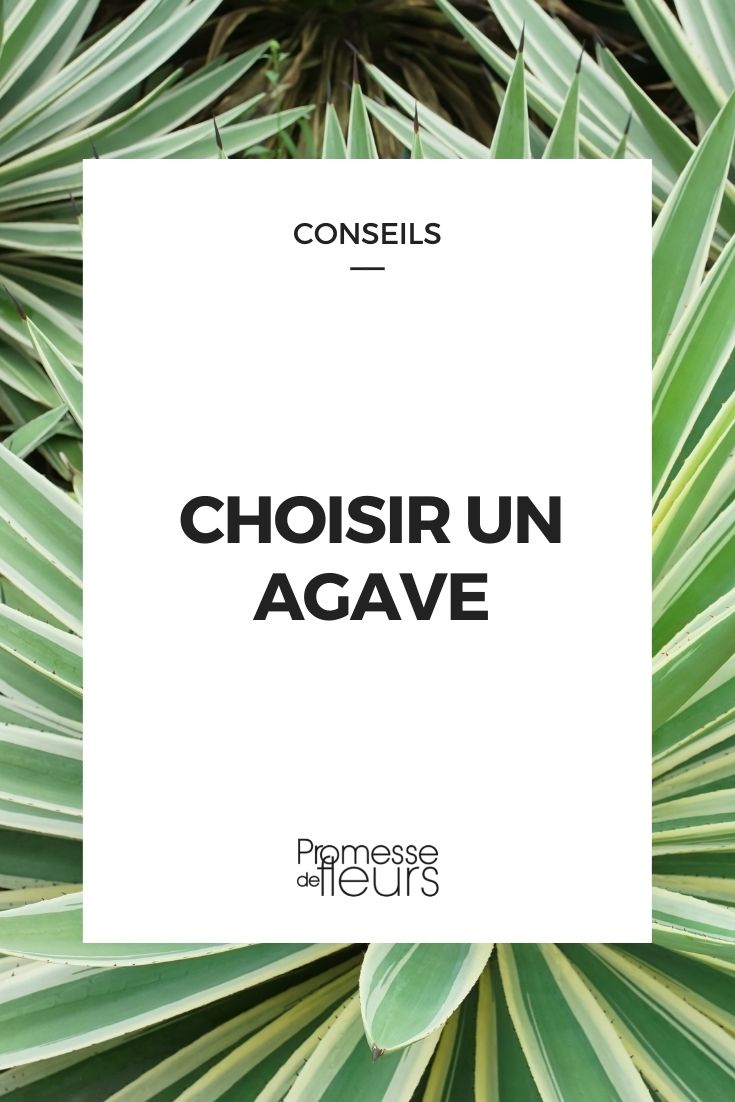































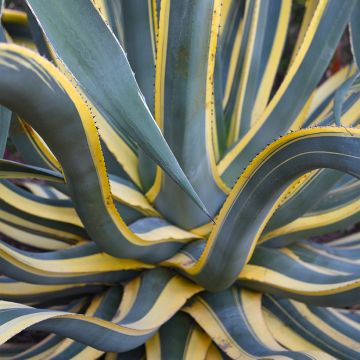
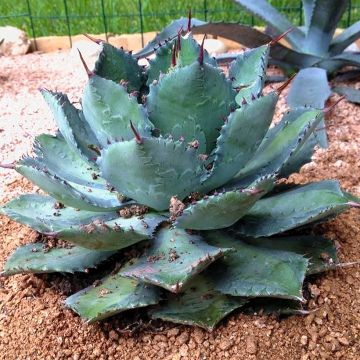
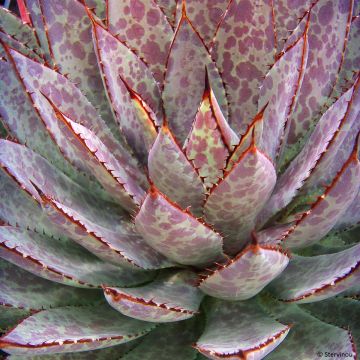
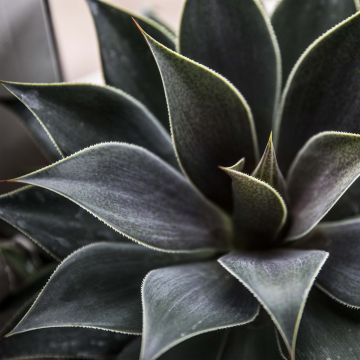
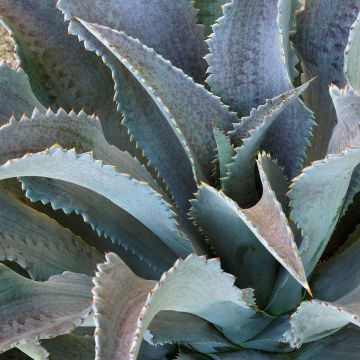
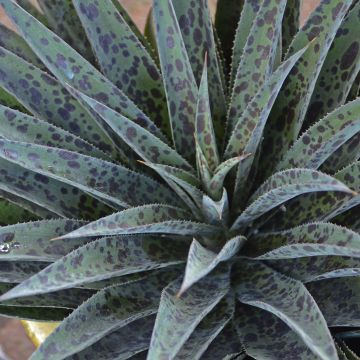
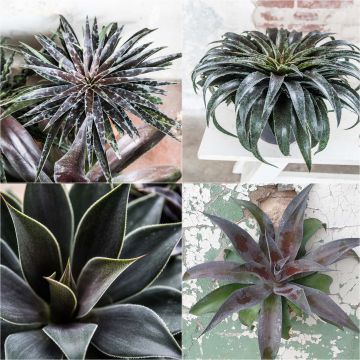
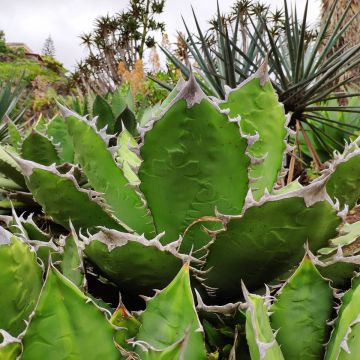
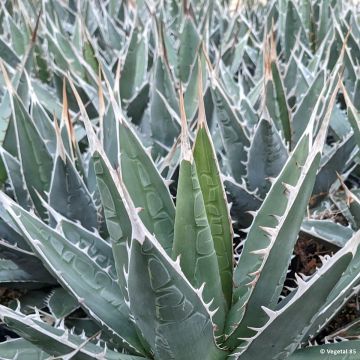
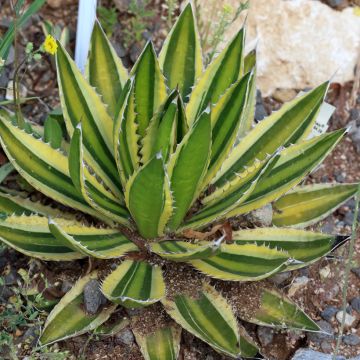
Comments